1. Start Here
1.1. Technical requirements
1.1.1. Hardware
1.1.1.1. system minimum requrements
1.1.1.2. Headset & microphone
1.1.2. plugins
1.1.2.1. Adobe reader
1.1.2.2. Flash Player
1.1.2.3. QuickTime player
1.2. Browser tune up
1.3. Syllabus
1.4. Syllabus quiz
2. Course description
2.1. Description and outline
2.2. Welcome video
3. Course Content
3.1. 1. Introduction
3.1.1. What is online teaching?
3.1.2. The limitations and the potential of the online environment
3.1.3. The different forms of online teaching
3.1.3.1. Web enhanced
3.1.3.2. hybrid
3.1.3.3. fully online
3.1.4. The truth and the myth about teaching online
3.1.5. What does it take to teach online?
3.1.5.1. Technology skills
3.1.5.2. Other
3.2. 2. Planning your Online Course
3.2.1. The ADDIE model
3.2.2. Writing clear objectives
3.2.3. Storyboarding
3.2.3.1. Is it the same as an outline?
3.2.3.2. Techniques & tools
3.3. 3. Content presentation
3.3.1. Creating Online lectures as:
3.3.1.1. Text (HTML & PDF)
3.3.1.1.1. Cons & Pros
3.3.1.1.2. Best Practices
3.3.1.1.3. Tools and techniques
3.3.1.2. Slide presentation
3.3.1.2.1. Cons & Pros
3.3.1.2.2. Best Practices
3.3.1.2.3. Tools and techniques
3.3.1.3. video
3.3.1.3.1. Cons & Pros
3.3.1.3.2. Best Practices
3.3.1.3.3. Tools and techniques
3.3.1.4. web conferencing
3.3.1.4.1. Cons & Pros
3.3.1.4.2. Best Practices
3.3.1.4.3. Tools and techniques
3.3.2. iCollege basics
3.3.2.1. Header and footer
3.3.2.2. File manager basics
3.3.2.2.1. Creating a folder structure
3.3.2.2.2. upload, download, delete, rename, etc
3.3.2.2.3. Create Web Dav connection
3.3.2.3. create folders (organizer pages)
3.3.2.4. Add files
3.3.2.5. custom look and layout
3.3.2.6. Using Custom Icons
3.4. 4. Learning Activities
3.4.1. Authentic activities
3.4.1.1. Characteristics of authentic activities
3.4.1.2. Can that be done online?
3.4.1.3. Using the web as a resource
3.4.2. Designing communication tools
3.4.2.1. Synchronous (WIMBA)
3.4.2.2. Asynchronous (iCollege discussions)
3.4.2.2.1. Threaded
3.4.2.2.2. Blog
3.4.2.2.3. Journal
3.4.2.2.4. Student Groups
3.4.2.2.5. Selective release (briefly)
3.4.2.3. Best practices for designing communication activities
3.4.2.4. Online Etiquette
3.5. 5. Incorporating Multimedia
3.5.1. What is multimedia
3.5.2. How it can enrich your course
3.5.3. Media
3.5.3.1. Images
3.5.3.1.1. Cons and pros
3.5.3.1.2. Best practices
3.5.3.2. Audio
3.5.3.2.1. Cons and pros
3.5.3.2.2. best practices
3.5.3.3. Video
3.5.3.3.1. Cons and pros
3.5.3.3.2. best practices
3.5.3.3.3. GPC Windows Media Server
3.5.3.4. Podcast
3.5.3.4.1. Cons and pros
3.5.3.4.2. best practices
3.5.3.4.3. USG podcasting server
3.5.3.5. Animation
3.5.3.5.1. Cons and pros
3.5.3.5.2. best practices
3.5.4. Embedding web video (Youtube, Blip.TV, etc.)
3.5.5. ADA compliance & section 508
3.5.6. Copyright and the murky world of fair use
3.5.7. Introduction to WIMBA voice tools
3.6. 6. Online Assessment
3.6.1. Tying assessment tools to instructional objectives
3.6.2. Types of questions (Bloom's Taxonomy)
3.6.3. What makes a good assessment
3.6.4. Assessment in iCollege
3.6.4.1. Assessments
3.6.4.1.1. Types
3.6.4.1.2. Respondus
3.6.4.1.3. Advanced Techniques
3.6.4.2. Assignments
3.6.4.2.1. individual assignments
3.6.4.2.2. Group assignments
3.6.4.2.3. Sign up sheets
3.6.4.3. Graded Discussions
3.6.4.4. Grading forms
3.6.5. Tips & tricks to minimize cheating
3.6.5.1. Respondus Lockdown browser
3.6.5.2. Other techniques
3.7. 7. Preparing the students for your online course
3.7.1. The online syllabus
3.7.1.1. Why all the way at the end?
3.7.1.2. Structure - components (GPC Online guidelines)
3.7.1.3. The syllabus as a contract
3.7.1.4. The syllabus as a calendar
3.7.1.5. The syllabus as a map
3.7.2. Orientation / welcome video
3.7.3. Start-up checklist
3.7.4. Anticipating problems
3.7.4.1. Technical problems
3.7.4.2. Learning / communication style problems
3.7.4.2.1. Field-dependentce
3.7.4.2.2. Field-independence
3.7.4.2.3. Cultural background
3.7.5. Dry runs / low-stake assignments
3.7.6. support mechanisms
3.7.6.1. Glossary
3.7.6.2. FAQs
3.7.6.3. other
3.8. 8. Managing your online course
3.8.1. Record keeping & file management
3.8.1.1. File manager - revisited
3.8.1.1.1. Folder structure
3.8.1.1.2. file naming considerations
3.8.1.1.3. Desktop mirror image
3.8.1.2. multiple versions of files
3.8.1.3. Naming conventions (student assignmentss)
3.8.2. Managing communication flow
3.8.2.1. Announcement tool
3.8.2.1.1. How to use it
3.8.2.1.2. What to use it for
3.8.2.2. email
3.8.2.2.1. rules
3.8.2.2.2. your availability
3.8.2.2.3. Channeling to discussion
3.8.2.3. Virtual office hours
3.8.3. Fostering asynchronous discussion
3.8.4. Managing synchronous communication
3.8.5. Guidelines for student participation
3.8.5.1. assigning grades
3.8.5.2. frequency
3.8.5.3. quality
3.8.6. Providing feedback
3.8.6.1. iCollege Gradebook
3.8.6.2. Affective considerations
3.8.7. Providing advice and support
3.8.8. Wrap up
3.8.8.1. End of course video
3.8.8.2. Recommended readings
3.8.8.3. We are here to help
4. Communication Center
4.1. General Discussions
4.1.1. Lounge Area
4.1.2. Questions about the course
4.1.3. Technical Issues
4.1.4. Useful Links
